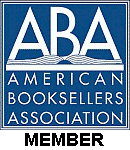Betty Crocker has been a widely recognizable Pop Culture icon in the US since the 1930s. The facts that she has never existed as a real person and while at the same time representing the marketing arm of General Mills has not and should not detract from cookbook collectors' interest in Betty Crocker cookbooks and related emphemera. Students of American social and cultural history as well as those interested in food history or even those just interested in how important food has been in their lives will find this an interesting collector's specialty.
 Betty Crocker was the 1921 marketing creation of Washburn-Crosby Company of Minneapolis/St. Paul, one of the six major flour milling companies that eventually merged to become General Mills in 1928. Betty's first name was chosen for her because it was considered to be both warm and friendly as well as reassuringly 'American'. Her last name, Crocker, was chosen to honor William H. Crocker, a well-loved and recently retired company director at Washburn-Crosby. Initially Betty was intended to provide a warmer, more intimate way to answer consumer mail which by the early 1920s already numbered in the thousands of pieces each year for the company. For this purpose, a Betty Crocker was given also given a signature at this time. This signature was picked from the submitted entries in a 'Betty Crocker' signature contest held among all
Betty Crocker was the 1921 marketing creation of Washburn-Crosby Company of Minneapolis/St. Paul, one of the six major flour milling companies that eventually merged to become General Mills in 1928. Betty's first name was chosen for her because it was considered to be both warm and friendly as well as reassuringly 'American'. Her last name, Crocker, was chosen to honor William H. Crocker, a well-loved and recently retired company director at Washburn-Crosby. Initially Betty was intended to provide a warmer, more intimate way to answer consumer mail which by the early 1920s already numbered in the thousands of pieces each year for the company. For this purpose, a Betty Crocker was given also given a signature at this time. This signature was picked from the submitted entries in a 'Betty Crocker' signature contest held among all  of the female employees of Washburn-Crosby. This signature has remained essentially the same ever since and even now part makes up an important part of the trademarked logo used on General Mills' Betty Crocker products.
of the female employees of Washburn-Crosby. This signature has remained essentially the same ever since and even now part makes up an important part of the trademarked logo used on General Mills' Betty Crocker products.

In 1924, Washburn-Crosby acquired the failed Minneapolis/St. Paul radio station WLAG, changing the station's call letters to WCCO (i.e., Washburn-Crosby Company) and establishing it as one of the oldest radio stations in Minnesota. WCCO is notable in advertising history because it was was the media thorugh which unique and groundbreeading advertising and promotiions were introduced in the 1920s and 1930s. In broadcasting history it is just as significant. WCCO was part of a trend in commercially motivated radio development which aggressively worked to engineer and use better and more powerful radio transmitters. It 1932 WCCO reached a watershed when the station completed construction of a 50,000-watt tower, the maximum power licensed in the United States. With the construction of two additional 300-foot towers, WCCO's signal srength was increased even more making it one of the nation's most powerful "clear channel" broadcasters and allowing it to be picked up as far away as Hawaii, the Caribbean, and Mexico.
It was in 1924 at this radio station that Betty Crocker was first given a voice for the debut of the nation's very first cooking show, The Betty Crocker School of the Air, a typical example of WCCO's innovative use of radio marketing. This voice was first provided by just a single actress working out of the WCCO radio station. Because the show was an immediate success, it expanded to thirteen regional stations the following year with thirteen different actresses in thirteen differend radio studios providing Betty's voice. Betty returned to being just one 'person' when the program joined the fledgling NBC national newtork in 1927. The Betty Crocker School of the Air program ended up being broadcast for twenty-seven years making it a fixture in mainstream American culture.
For cookbook collectors, it is in publishing that the Betty Crocker label is important. General Mills published various promotional pamphlets by Betty Crocker from 1930 to 1950 culminating in the 1950 publication of the most widely known one, "Betty Crocker's Picture Cook Book." This book is in its 10th edition and is now published under the title "Betty Crocker Cookbook: Everything You Need to Know to Cook Today."

During the 1930s, the Golden Age of Radio, cooking shows continued to proliferate. In addition to Betty Crocker the most important of these real cooking personalities Winifred Carter, Frances Lee Barton, and Mary Ellis Ames.
In 1936 Betty Crocker was given a face by the artist Neysa McMein. This official likeness was created by blending the features of all the women in the company’s Home Service Department. Over the years this official likeness has occassionally been updated to reflect changing times and attitudes towards women and American home life.

Generally, there are thus two major influences drawing cookbook colletors to Betty Crocker publications. One is the practicality of the Betty Crocker cookbooks themselves. From their beginning, their recipes have triple-tested as well as being illustrated with pictures and step-by-step instructions. From this, Betty Crocker cookbooks earned a reputation for recipes that are simple, economical, and tasty.
In addition to collecting a cookbook for its practical use, nostalgia has brought many collectors to Betty Crocker. Many people begin to acquire or collect Betty Crocker cookbooks because they love them. Some look for old cookbook editions that they remember their mother using. Some are drawn to Betty Crocker by memories by family cooking traditions. Certain cookbooks or cookbook editions are saught out because they provide a way to pass on these traditions to children or else involve them in developing new ones. Some collectors also seek out cookbooks that contain particular recipes that they prize because of an association with an important relationship to a relative. Nostalgia, the familiar flavors of childhood, and family memories associated with food reflect the success of Betty Crocker cookbooks. They popularized classic American recipes such as Snickerdoodles and Pigs-in-a-Blanket and went on to become the icon of tradional American food for many.

Home
Older Article: 2007 Barry Award Nominations

Betty Crocker, the origins of an American pop culture icon by Steven Williams is licensed under a Creative Commons Attribution-Noncommercial-No Derivative Works 3.0 United States License.
Permissions beyond the scope of this license may be available by contacting Steven Williams through Bookmarc's BookmarcsOnline.








